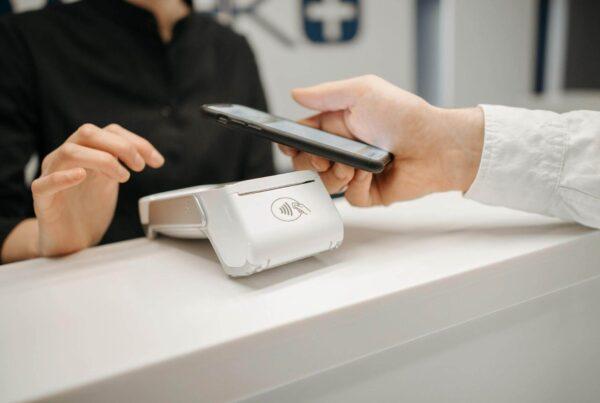One of the keys to the success of any retail clothing business is pricing strategy, which will strongly determine your sales and your profitability. To operate your apparel efficiently, you need to figure out how much profit you earn and the profit margin ratio you make. This article will help you understand what is a good profit margin for clothing stores, the formula to calculate it, and the best practices to boost your margin.
What is the profit margin?

Profit margin of a product is the percentage of sales that you can convert into profits. The metric informs you of how profitable your pricing model is, how effective you control costs, and use resources for production.
Profit margin of a product indicates the difference between its selling price and costs. It tells you how many cents of profit is generated for each dollar of sale. For example, if a boutique achieves a 40% profit margin, it means the business has a net income of $0.4 for each dollar earned from sales.
The higher your profit margin, the more profit you’re making on each dollar of sales. Higher margins indicate your company is running a profitable business model and your sales performance is good.
Types of profit margin

There are 3 most common types of profit margins: gross profit margin, operating profit margin, and net profit margin. They all offer valuable insights into your financial health that business owners, accountants, investors, lenders, and creditors can rely on to make decisions.
Let’s dive into each of them and see how they’re different.
Gross profit margin
Gross profit is how much money you got after deducting the cost of goods sold (COGS) from the revenue.
Cost of goods sold is the direct cost required in the production of goods, including materials, labor, supplies, and factory overheads.
You can quickly calculate the gross profit by this formula:
Gross profit = total revenue – cost of goods sold
After getting the gross profit, you can find out the gross profit margin with the below calculation:
Gross profit margin = (gross profit / revenue) x 100%
Gross profit margin usually has more value to understand the profitability of a specific product rather than the entire business. This is because your fashion retail needs to take into account many other operating costs. Thus, if you have high operating expenses, your bottom line may suffer even though your gross profit margin may seem good.
Operating profit margin
Operating profit is the remained revenue after subtracting the COGS and the operating expenses (OPEX).
Different from COGS, operating expenses are the indirect costs that support your daily business operation, such as rent, utilities, payroll, marketing costs, and software.
Follow this formula to calculate your operating profit:
Operating profit = revenue – cost of goods sold – operating expenses
Next, determine your operating profit margin:
Operating profit margin = (operating profit / revenue) x 100%
To fully see your apparel’s health, you should focus on the operating profit or net profit margin.
Net profit margin
Net profit is your bottom line — the most important metric for any business. It is what you keep after deducting COGS, OPEX, interest, and taxes.
This is the formula for net profit:
Net profit = total revenue – COGS – OPEX – interest – taxes
Then, calculate the net profit margin based on the percentage of revenue:
Net profit margin = (net profit / revenue) x 100%
Net profit margin is the best measure of the profitability of a company. It reports the final profit ratio you keep for yourselves after accounting for all sales and costs. Thus, the net profit margin is the most preferred metric among the 3 types of profit margin to evaluate the performance of a retail business.
What is a good profit margin for clothing?

The gross profit margin for retail clothing stores is around 53%. However, the net profit margin only fluctuates around 7%.
Although the markup in the fashion industry can be high, when considering all operating costs, interests, and taxes, the net profit margin is much lower. Thus, to check your financial health, you should pay attention to your net profit margin. With the rising popularity of online shopping, there’re many factors influencing your profit margin in the fashion industry, such as:
- Low barriers to entry create a highly competitive market. For mainstream products sold by many online retailers, whoever can offer the lowest selling prices will win. This situation puts more stress on the earnings of all merchandise, and thus lowers the profit margin of the fashion industry.
- Retailers need to spend more marketing costs to get customers. Since customers have so many choices after a click of an online search, your store may need more marketing effort to attract customers and keep them to stay.
In general, an average net profit is around 10%, while a high margin is 20%, and a low margin is 5%.
If you want to open online apparel, here’s an article exploring how to start your own clothing store with no money that can give you a good start.
7 ways to increase the profit margin for clothing boutiques
1. Control your sales and inventory with a POS system

First of all, you need the right software to organize and manage all costs and sales in one place. An ideal system should provide you with important data about your store such as stock flow, the best selling products, the items having a high or low velocity, etc. Based on that, you can make more effective decisions to run your boutique.
For example, knowing which items are hanging on shelves for a long time means you can launch a specific campaign to push sales for those products. This will reduce the inventory holding costs, thus decreasing your operating expenses, and raise your profit margin eventually.
In addition, after determining your bestsellers, you can ensure to refill stock on right to meet the demand of customers, and never miss any sales due to lack of inventory. In this case, raising revenue will positively affect your profit margin.
One of the best software that empowers you with the above benefits is Magestore POS solution customized for boutique stores. The POS can synchronize all data on product information and stock flow across warehouses and stores, helping you control your inventory and suppliers easier.
It allows you to apply the click-and-collect method to your store, which is a rising trend that creates a convenient and seamless shopping experience for customers. Your staff can fulfill all orders online and in-store in the POS, where the sales are recorded in real-time and the inventory level is updated accordingly. In addition, you can track customer information and their purchase history in the system, giving you insights to better leverage personalized offers for them. All promotion campaigns and loyalty programs can be created and controlled within the POS, and reports can be generated in real-time to evaluate the efficiency of the campaigns.
With the Magestore POS system, you can boost sales and control your inventory cost for your apparel better. It allows you to manage your SKUs and gives you data on many important metrics like inventory carrying cost, stock turnover ratio, and lead time. These data will help you make better decisions to run your boutiques, and get closer or exceed the good profit margin for clothing.
2. Reduce operating costs

Operating costs are the indirect costs that support your retail activities, such as rent, utilities, and payroll. These expenses vary from business to business.
Reducing the operating costs is one quick way to increase profit margin. To do that, you first need to list down the expenses that your business is having, including labor, office space, utilities, equipment, maintenance costs, licenses, insurance, etc. Then, look at where you can cut down on expenses and measure their effect on your profit margin.
You can optimize the cost by using technology and reducing the expenses of manual work. For example, apply a chatbot to serve multiple customers at once or improve your website and the checkout process to create a seamless shopping experience. Technology and automation will help you scale up your boutique faster with the most optimal human resources, thus saving you costs and also limiting errors. Still, you should remain balanced and not cut costs too much which can ruin your product quality and make operation difficult.
3. Don’t obsess with profit per order

Many clothing retailers are unwilling to lose profit on an order and don’t pay attention to nurturing the relationship with customers. Sometimes you’ll encounter a situation when a customer isn’t happy and wants a refund. Don’t be afraid to lose an order. In this highly social and connected world, a bad review can hurt your brand. Instead, you should quickly and proactively solve the problems, even better without extra charge, and delight the customer with your services.
Serving these customers can cost a bit more in the short term, however, it will pay off incredibly as you build a loyal fan base willing to recommend your apparel to their friends.
Looking at the big picture with a customer-oriented mindset will help you improve the average life-long value of your customers and receive referral marketing. This will in turn enhance your sales, thus resulting in a good profit margin for clothing.
4. Increase reputation to generate sales

Customers are now more willing to explore new brands with endless options to choose from when looking for a product. This is a big opportunity for apparel to get the first impression and drive sales from new customers. Thus, you need to develop a trustworthy look and feel and make sure it is consistent across all channels, along with helpful customer service and a smooth purchasing process.
Here’re the 5 key ways a fashion online store can build trust with customers and sell more, researched by Shopify:
- Build a friendly and welcoming homepage to create a good first impression for new shoppers
- Provide detailed product information and easy navigation to search for products
- Share the story of your brand and appear authentic to customers
- Display customer reviews to highlight their satisfaction with social proof
- Create a transparent policy on pricing and transaction costs
Establishing trust with new shoppers will encourage them to purchase in your store, and in turn, enhance your profit margin.
5. Increase your average order value

Another way to gain a good profit margin for clothing is by raising your average order value (AOV). Average order value is the average value per transaction that a customer makes in your store. To calculate AOV, divide the total revenue by the number of orders.
Here’re some ways to increase the AOV for your fashion store:
- Add product recommendations on product pages and checkout pages to entice customers to explore and purchase more items, as well as a shift from low-margin sales to high-margin sales.
- Upsell or cross-sell complementary products that go well with items in the shopper’s cart. For example, you can upsell a pair of skinny jeans that match a pattern crop top shirt.
- Provide order minimum incentives, such as a 10% discount on orders over $50, or free delivery for a minimum order amount.
- Create product combos or packages that cost less when purchased together versus individually. This helps increase the value of customers’ purchases and create a better shopping experience.
- Offer promotions or special coupons on higher-margin products. These are products that bring you a higher profit per unit sold, you can spend a few marketing costs to boost the sales volume for these items.
6. Create a customer loyalty program

Loyalty programs are effective ways to boost profit margins and improve profitability for your boutique. Smallbizbusiness finds that 65% of a company’s business is generated from existing customers and a 5% increase in customer retention can boost profits by 25% to 95%.
Therefore, you should create a customer loyalty program to focus on existing customers rather than spending to acquire new ones. Show your customers that you appreciate them and want to provide what’s best for them. 82% of companies share that retention is cheaper than acquisition, thus focusing on loyalty programs is a good solution to boost your profit margin.
7. Raise your prices

Raising prices, in theory, will boost your profit margin. However, you need to take into account other factors like market demand and competition. If you raise prices too high, you may run into dried-up sales and customers will walk away. Thus, when implementing this strategy, make sure you have a unique selling point and test different pricing levels to see if it works for your apparel.
If you have a large catalog, start price testing with the best sellers in your inventory. You can consider the 80/20 rule in inventory to find out which items are performing best and develop a pricing plan for them.
Conclusion
Profit margin is a crucial metric that any fashion retailer must understand and benchmark if they meet the good profit margin for clothing. Keep in mind the 7 ways to boost your margin and apply what is suitable for you. If you have a good unique selling point and support of technology like Magestore POS, you can operate your boutique more efficiently, satisfy your customers and keep them coming back.














